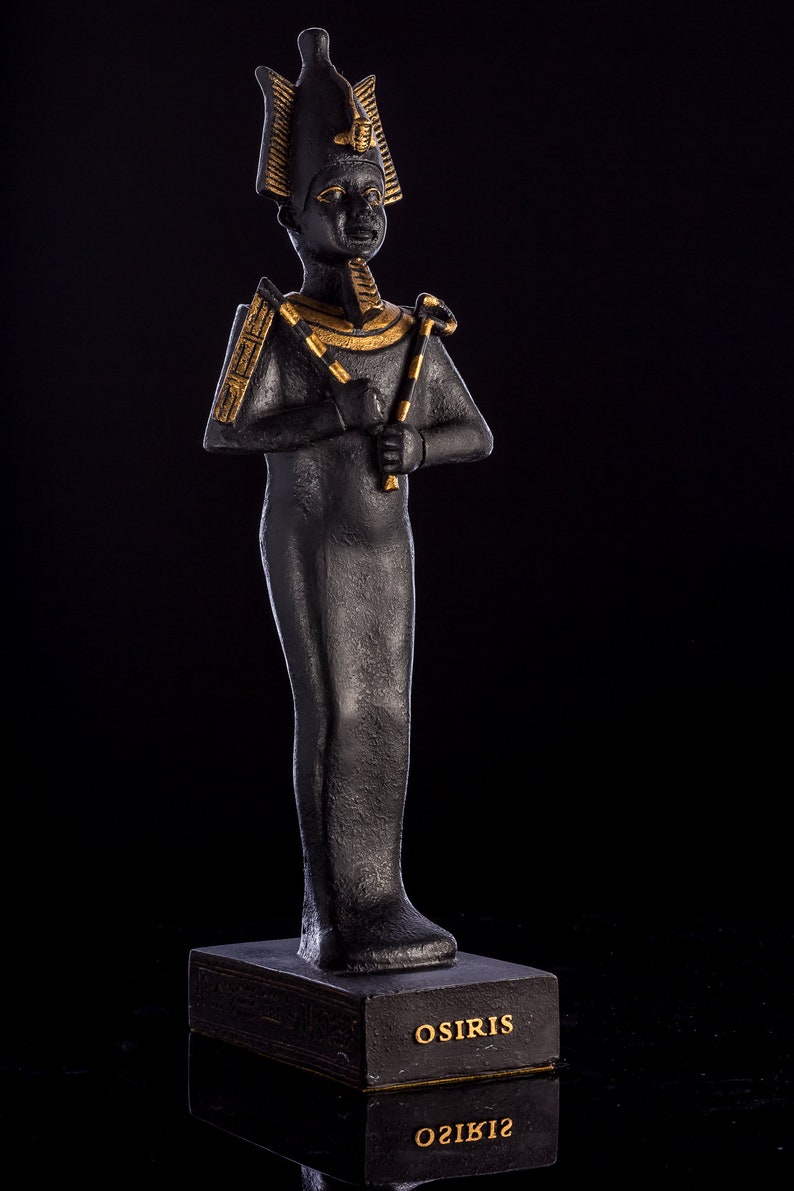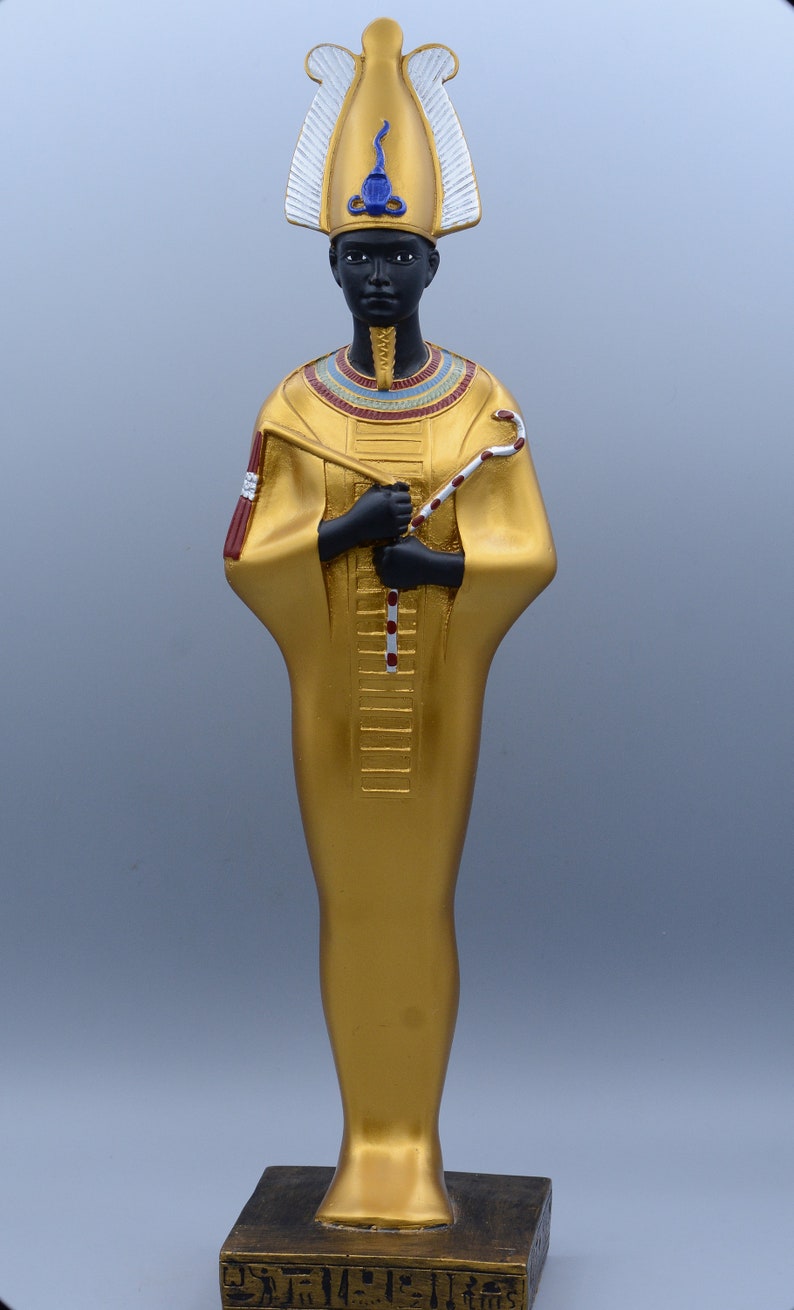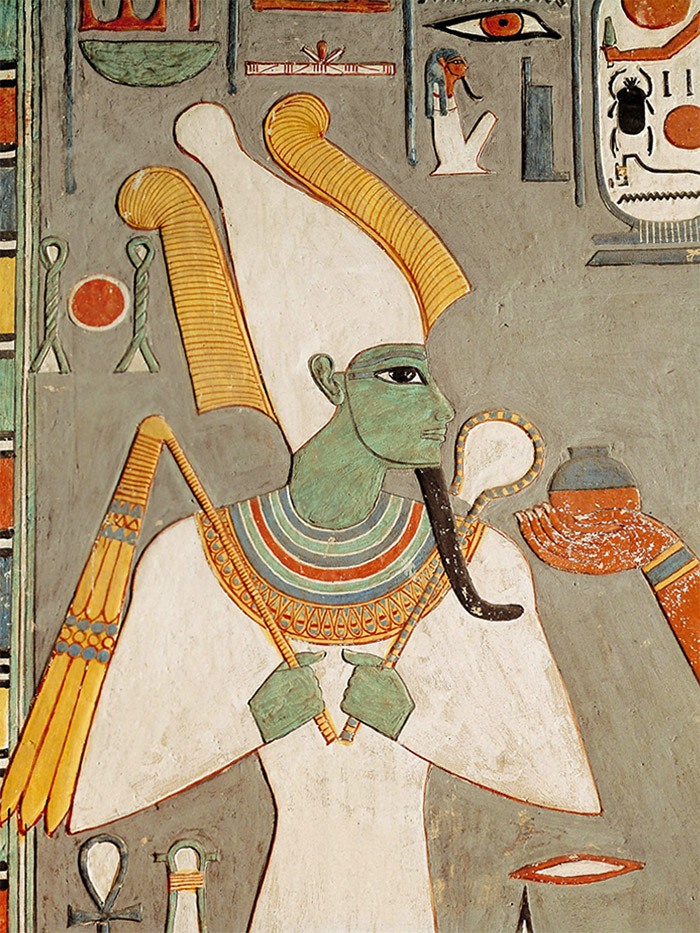

He ordered the tree cut down and brought to his palace as an ornamental pillar for the court, and there Osiris remained, trapped inside the coffin within the pillar, until he died. The king of Byblos, Malcander, came to the shore with his wife Astarte and admired the tree and the sweet scent which seemed to emanate from it. The tree grew quickly around the coffin until it completely contained it. Osiris' body traveled out to sea and eventually his coffin became lodged in a great tamarisk tree growing near Byblos in Phoenicia. When Osiris lay down in the coffin, Set slammed the lid on, fastened it shut, and threw it into the Nile, where it was carried away down river. Set had a beautiful coffin made to Osiris' exact height and then threw a grand party where he presented this box and told the guests that whichever of them fit in it most perfectly could have it as a gift. Their relationship deteriorated further after Nephthys, Set's wife, disguised herself as Isis and seduced Osiris, becoming pregnant with the god Anubis. Set was jealous of his brother's success and grew resentful. 6000-3150 BCE) and probable that he originated at that time. It is also possible that Osiris was worshipped in some form in the Predynastic Period of Egypt (c. 3150-2613 BCE) to the Ptolemaic Dynasty (323-30 BCE), the last dynasty to rule Egypt before the coming of Rome. His worship spanned thousands of years from shortly before the Early Dynastic Period (c. After Isis, Osiris was the most popular and enduring of all the Egyptian gods. He was also known as The Lord of Love, King of the Living, and Eternal Lord. The west was associated with death and 'westerners' became synonymous with those who had passed on to the afterlife. Osiris was known by many names but chiefly as Wennefer, "The Beautiful One" and, in his role as Judge of the Dead, Khentiamenti, "The Foremost of the Westerners". He is associated with the mythical Bennu bird (inspiration for the Greek Phoenix) who rises to life from the ashes. Images of Osiris as a living god depict him as a handsome man in royal dress wearing the crown of Upper Egypt as a plumed headdress known as the atef and carrying the crook and flail, symbols of kingship.

He is also frequently shown as a mummy or in partially mummified form in his role as Judge of the Dead.
EGYPTIAN GOD OSIRIS SKIN
He is associated with the djed symbol and is often depicted with black or green skin symbolizing the fertile mud of the Nile and regeneration. Osiris was originally a fertility god, possibly from Syria (though this claim is contested) who became so popular he absorbed the function of earlier gods such as Andjeti and Khentiamenti, two gods of fertility and agriculture worshipped at Abydos. This myth, and the gods involved, became central to Egyptian culture and religious life. He is the first-born of the gods Geb (earth) and Nut (sky) shortly after the creation of the world, was murdered by his younger brother Set, and brought back to life by his sister-wife Isis. The name `Osiris' is the Latinized form of the Egyptian Usir which is interpreted as 'powerful' or 'mighty'. Saving Earth Britannica Presents Earth’s To-Do List for the 21st Century.Osiris is the Egyptian Lord of the Underworld and Judge of the Dead, brother-husband to Isis, and one of the most important gods of ancient Egypt.Britannica Beyond We’ve created a new place where questions are at the center of learning.100 Women Britannica celebrates the centennial of the Nineteenth Amendment, highlighting suffragists and history-making politicians.
EGYPTIAN GOD OSIRIS HOW TO


Britannica Classics Check out these retro videos from Encyclopedia Britannica’s archives.


 0 kommentar(er)
0 kommentar(er)
